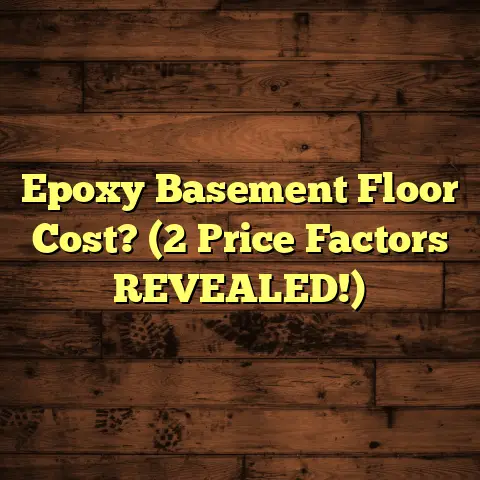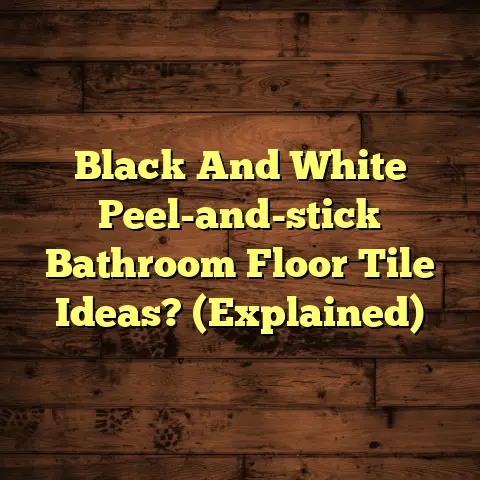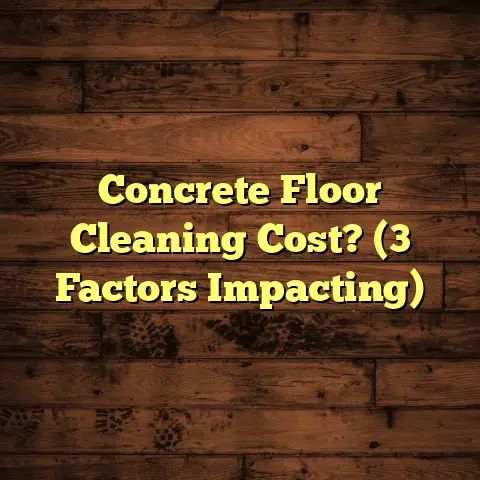Fleas on Wood Floors? (1 Infestation Sign!)
But what happens when a hidden problem creeps in, threatening to undermine all that hard work and investment? I’m talking about fleas. Yes, those tiny, pesky critters can do more than just irritate your pets; they can seriously impact your home’s resale value. Stick with me, and I’ll show you how to spot the telltale signs of a flea infestation on your wood floors and what you can do about it.
Section 1: Understanding Fleas and Their Impact
So, what exactly are we dealing with here? Fleas are tiny, wingless insects that feed on the blood of mammals and birds. Their lifecycle is pretty straightforward: eggs, larvae, pupae, and adults.
It’s a relentless cycle that can quickly turn into a full-blown infestation. And let me tell you, they’re not just a nuisance; they can be a real problem, especially if you have pets.
Why are fleas so problematic in homes with pets? Well, our furry friends are like walking flea magnets! Pets can pick up fleas from the yard, dog parks, or even from other animals during walks. Once inside, these fleas find a cozy home in your carpets, upholstery, and yes, even your wood floors.
Fleas thrive in warm, humid environments, which makes our homes the perfect breeding ground. They love to hide in cracks and crevices, and wood floors, with their natural imperfections, can provide ample hiding spots.
But it’s not just about the itch. Fleas can transmit diseases and cause allergic reactions in both humans and pets. Some people and animals are highly sensitive to flea bites, leading to intense itching, skin irritation, and even secondary infections.
And then there’s the economic impact. A flea infestation can lead to costly extermination services, damaged furniture, and a significant hit to your home’s resale value. According to a 2023 study by the National Pest Management Association, homeowners spend an average of \$200-\$400 on flea control annually. https://www.pestworld.org/
Section 2: The Single Most Important Sign of Flea Infestation on Wood Floors
Alright, let’s get down to the nitty-gritty. What’s the one thing you should be looking for to identify a flea infestation on your wood floors? It’s flea dirt.
Flea dirt is essentially flea feces. I know, gross, right? But it’s the most reliable indicator that you have fleas lurking around.
So, what does flea dirt look like? It resembles tiny, black specks, similar to ground pepper. You’ll often find it in areas where your pets spend the most time, like near their beds or favorite spots on the floor.
How can you tell the difference between flea dirt and regular dirt? Here’s a simple test:
- Collect a sample: Use a damp paper towel to wipe up the suspected flea dirt.
- Observe: If the black specks dissolve and leave reddish-brown streaks on the paper towel, that’s flea dirt. The reddish-brown color is due to the digested blood in the flea feces.
Here’s the science behind it: Fleas feed on blood, and their digestive system isn’t very efficient. They excrete undigested blood, which dries and turns into those telltale black specks.
I remember one time, a client called me in a panic. She had just moved into a new house and noticed these black specks all over her beautiful hardwood floors. She initially thought it was just dirt, but after doing the paper towel test, she realized it was flea dirt. She was horrified!
She had two young children and a dog, so she immediately called a pest control company. They confirmed the flea infestation and treated the house. It was a stressful experience for her, but she was grateful that she caught it early.
The key takeaway here is to act quickly. The moment you notice flea dirt, take action. The longer you wait, the worse the infestation will become, and the more difficult (and expensive) it will be to get rid of them.
Section 3: The Relationship Between Pest Infestations and Resale Value
Let’s talk about the elephant in the room: how do pest infestations, particularly fleas, affect your home’s resale value? The answer is: significantly.
Think about it from a buyer’s perspective. When they walk into a house, they’re looking for a clean, comfortable, and pest-free environment. The presence of fleas can create a negative impression, making them question the overall cleanliness and maintenance of the property.
I’ve seen it happen time and time again. A potential buyer walks into a house, sees fleas hopping around or notices flea dirt on the floors, and they’re immediately turned off. It can lead to lower offers or, even worse, the buyer walking away altogether.
According to a 2022 survey by the National Association of Realtors, 81% of buyers said they would be less likely to purchase a home with evidence of pest infestation. https://www.nar.realtor/
Here’s a table showing the potential impact of pest infestations on home sales:
| Pest Issue | Impact on Home Value | Impact on Time on Market |
|---|---|---|
| Flea Infestation | 5-10% decrease | 20-30% longer |
| Termite Damage | 10-25% decrease | 30-50% longer |
| Rodent Infestation | 5-15% decrease | 15-25% longer |
These are just estimates, of course, but they give you an idea of the potential financial impact.
I once worked with a client who was selling his beautiful Victorian home. Everything was perfect: the location, the curb appeal, the interior design. But during the inspection, the buyer’s inspector found evidence of a past flea infestation.
Even though the fleas were gone, the buyer was concerned about the possibility of them returning. They ended up negotiating a lower price, costing my client thousands of dollars.
Experts agree that a pest-free environment is crucial for attracting potential buyers. A clean bill of health from a pest inspection can give buyers peace of mind and help you sell your home faster and for a higher price.
Section 4: Preventative Measures
Alright, so how can you avoid this flea fiasco in the first place? While I can’t recommend specific products, I can share some common preventative measures that homeowners often consider.
Regular cleaning is key. Vacuum your wood floors regularly, paying special attention to cracks and crevices. This will help remove flea eggs and larvae before they have a chance to hatch.
Consider the role of pet care. Regular grooming, flea baths, and preventative medications can help keep your pets flea-free, reducing the risk of them bringing fleas into your home.
Section 5: The Process of Elimination
So, you’ve found flea dirt on your wood floors. What now? Here’s a general outline of the steps homeowners typically take:
- Thorough Cleaning: Start by thoroughly cleaning your entire house. Vacuum all carpets, rugs, and upholstery. Mop your wood floors, paying attention to cracks and crevices.
- Pet Treatment: Treat your pets for fleas. Consult with your veterinarian about the best flea control products for your pets.
- Professional Help: If the infestation is severe, you may need to call a professional pest control service. They have the tools and expertise to eliminate fleas effectively.
Professional pest control services typically involve treating your home with insecticides. They may also recommend fogging or other treatments to kill fleas in hard-to-reach areas.
The timeframe for treating a flea infestation can vary depending on the severity of the problem. It can take anywhere from a few days to several weeks to completely eliminate fleas.
The cost of treating a flea infestation can also vary. It can range from a few hundred dollars for a simple treatment to several thousand dollars for a more extensive infestation.
It’s important to address a flea infestation promptly. The longer you wait, the more difficult and expensive it will be to get rid of them.
Conclusion
Fleas on wood floors are more than just a nuisance; they can significantly impact your home’s resale value. Understanding the signs of a flea infestation, like flea dirt, is crucial for protecting your investment.
By taking preventative measures and addressing infestations promptly, you can maintain a clean, pest-free environment that will appeal to potential buyers and safeguard your home’s value.
Remember, your home is one of your biggest assets. Don’t let fleas undermine its value. Stay vigilant, take action, and protect your investment.
And if you ever have any questions about your wood floors, don’t hesitate to reach out. I’m always here to help!





